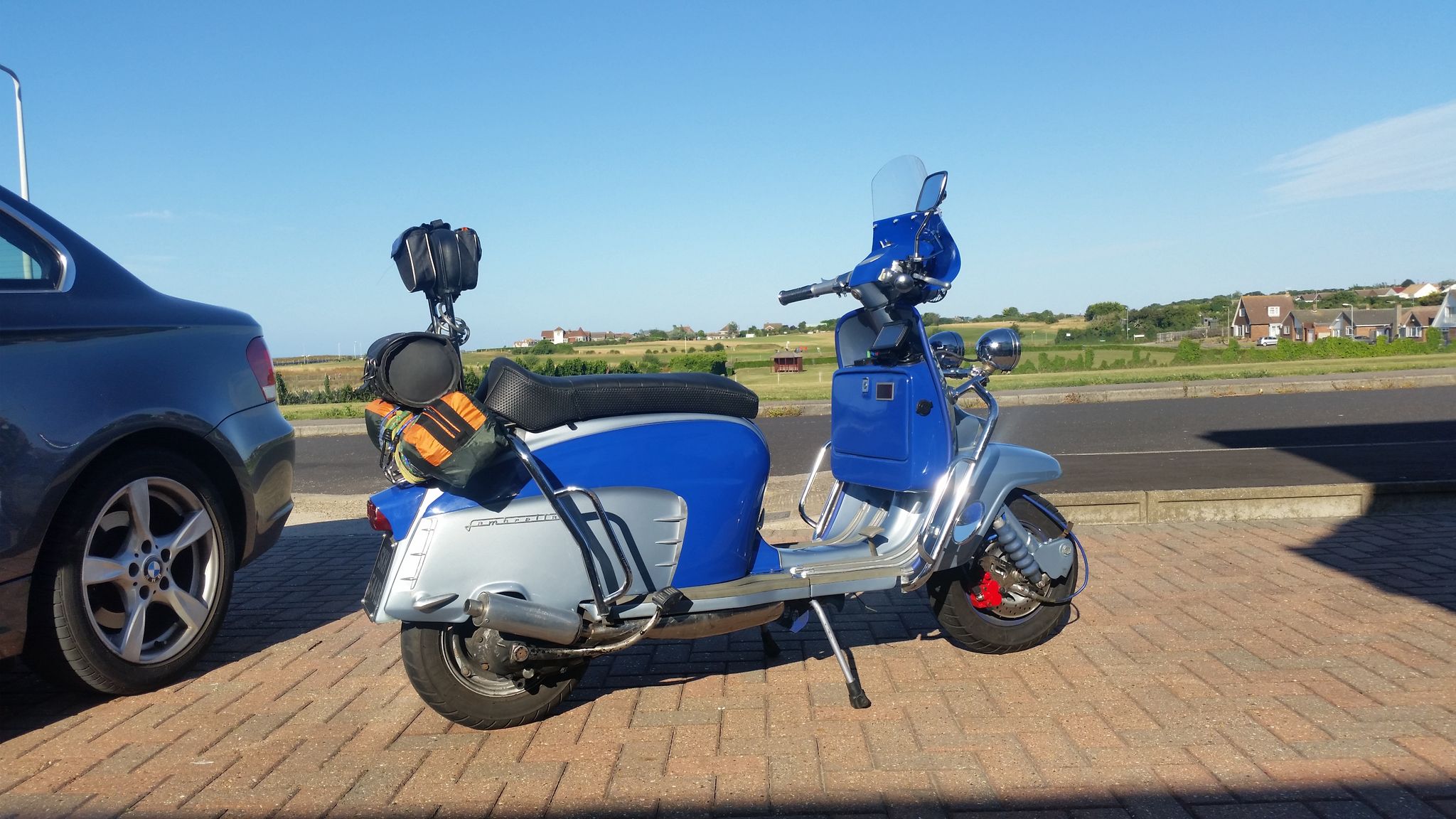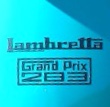I have just read an interesting article on ignition timing optimisation in 2 strokes ( not lambretta) and it seems to improve as the timing increases through 20 deg btdc and begins to drop off into the mid 30s btdc ( please note the Rev range was 3k to 5k)
The reasons given in the article are that at lower timings ( below 20) by the time the flame ignites the piston is passing TDC, and the fuel is beginning to decompress, leads to power loss and the flame propagating further down the barrel and increased heating.
Above 30 deg the power is lost as the flame propagation acts against the upward stroke of the piston so making it less efficient
The traditional ignition timing on a lambretta was 21 btdc, we are now running at around 19-17 deg btdc due to modern fuel.
Both can't be right and I'm not sure what I'm missing, can anyone enlighten me.
LCGB Forums
The ability to post messages is restricted to LCGB members. Any questions contact us at lcgbadmin@googlemail.com
Ignition timing
8 posts
• Page 1 of 1
Re: Ignition timing
Used to be 23 BTDC. Personally I don't subscribe to the "let's set it at 16" school. Doesn't mean I'm right; doesn't mean I'm wrong but I have yet to see hard evidence that supports these level of retard.
However hedging my bets, I run an Agusto !!!
I always set static timing for others at 19 BTDC.
You've lit the blue touch paper ; I've blown on it, so bring it on.
However hedging my bets, I run an Agusto !!!
I always set static timing for others at 19 BTDC.
You've lit the blue touch paper ; I've blown on it, so bring it on.
-

CHRIS in MARGATE - Posts: 4080
- Joined: Fri May 30, 2014 5:49 pm
Re: Ignition timing
I can't remember all the details now, but there was an interesting article I read that said that maximum pressure above the piston post-burn should be at 14degrees (I think) past TDC at whatever speed the engine is turning. This is interesting, because there are lots of compromises in two-stroke engines and very few definitive constants. This led me to think that you definitely needed variable ignition timing as the speed of the burn didn't change with an increase in revs, so you had to start the burn at a different time to ensure that you got close to this magic constant.
Anyway, my memory plays tricks on me, but I hope some of the above is something like true. I am sure Adam Winstone will be along in a minute to explain it all to us properly.
Anyway, my memory plays tricks on me, but I hope some of the above is something like true. I am sure Adam Winstone will be along in a minute to explain it all to us properly.
-

Knowledge - Posts: 1972
- Joined: Sat May 31, 2014 11:42 am
- Location: Ipswich
Re: Ignition timing
I should have quantified this further, it's static timing and based on empirical results- not theoretical.
I can see where your coming from knowledge, The piston speed increases but the burn speed doesn't, trying to hit the magic firing point will have to mover the firing point away from TDC, so static a say 19 moving back to say 23 to ensure the optimum burn point is reached.
hopefully this will get interesting
I can see where your coming from knowledge, The piston speed increases but the burn speed doesn't, trying to hit the magic firing point will have to mover the firing point away from TDC, so static a say 19 moving back to say 23 to ensure the optimum burn point is reached.
hopefully this will get interesting
- Meds
- Posts: 431
- Joined: Sat May 31, 2014 10:08 pm
Re: Ignition timing
The principle reason that conventional two stroke engines require differing advanced ignition timing over their operating range is due to the fuel atomisation becoming finer as RPM increases.
As the finer atomisation results in a greater surface area, the potential efficiency becomes better, taking less time to burn as the consequence.
Fundamentally, due to the ‘finer mist’ comprising the larger surface area, there is much more fuel for the oxygen to ‘grab’ onto.
Imagine throwing egg sized pieces of wood onto an open, roaring fire & then do the same with a handful of loose sawdust. Which will combust quicker?
As for leaded fuel of years ago (with knock inhibitors) it is a fact of life that it is no longer available but most of us are capable of adjusting our engines to suit modern fuels.
As the finer atomisation results in a greater surface area, the potential efficiency becomes better, taking less time to burn as the consequence.
Fundamentally, due to the ‘finer mist’ comprising the larger surface area, there is much more fuel for the oxygen to ‘grab’ onto.
Imagine throwing egg sized pieces of wood onto an open, roaring fire & then do the same with a handful of loose sawdust. Which will combust quicker?
As for leaded fuel of years ago (with knock inhibitors) it is a fact of life that it is no longer available but most of us are capable of adjusting our engines to suit modern fuels.
- Warkton Tornado No.1
- Posts: 2257
- Joined: Sun Jan 11, 2015 1:27 pm
Re: Ignition timing
To complement WT1's comments. The efficiency of the burn is also related to the combustion chamber design particularly to do with the flame path. Ideally you should have the spark occur smack in the centre of the combustion bowl to achieve the shortest path in any direction. So, well designed centre squish heads will require slightly different ignition timings to standard design lammy side squish ones. Heat distribution through the piston is affected by the head design, its ability to shed heat via the cylinder walls is also a factor.
A 4 stroke has a fixed compression rate (Assuming it is normally aspirated and has no valve overlap). A 2 stroke has a variable compression rate. The best compression pressures occur when the expansion chamber is "on the pipe".
Published ignition timings are there as guidance only. A starting point.
The correct ignition timing is the the one that produces the most power throughout the rev range without blowing up. That's where Dyno's can really help.
A 4 stroke has a fixed compression rate (Assuming it is normally aspirated and has no valve overlap). A 2 stroke has a variable compression rate. The best compression pressures occur when the expansion chamber is "on the pipe".
Published ignition timings are there as guidance only. A starting point.
The correct ignition timing is the the one that produces the most power throughout the rev range without blowing up. That's where Dyno's can really help.
-

Fast n Furious - Posts: 1716
- Joined: Sat Nov 19, 2016 3:56 am
- Location: York
Re: Ignition timing
Thanks for the replies, it's given me a bit more understanding of the combustion process, but I'm still a bit confused maybee I should rephrase the question.
Old ignition timings using leaded fuel were set at approx 21-23 deg, this is roughly in line with the results of the study I read and I can understand the reasons behind what the study was saying.
We are now running our ignitions 16-19 deg,
MB RT recommend 17 deg which is in line with most designers, what is it about Morden fuels that have caused the significant change.
The only reasoning I can think off is that modern fuels burn faster then the ignition timings can be brought down to optimise the power delivery, but that's a guess
Old ignition timings using leaded fuel were set at approx 21-23 deg, this is roughly in line with the results of the study I read and I can understand the reasons behind what the study was saying.
We are now running our ignitions 16-19 deg,
MB RT recommend 17 deg which is in line with most designers, what is it about Morden fuels that have caused the significant change.
The only reasoning I can think off is that modern fuels burn faster then the ignition timings can be brought down to optimise the power delivery, but that's a guess
- Meds
- Posts: 431
- Joined: Sat May 31, 2014 10:08 pm
Re: Ignition timing
Plenty of good responses/info already but the one thing that I would be quick to add is the influence of fuel and burn temps on the combustion process, with modern fuels burning so much hotter. Remember the days when unleaded came in and all of the cars needed work to fit hardened valve seats AND to reduce compression, which was done to slow wear rate and to bring down running temps? With unleaded burning hotter then, and hotter again because of ethanol %, the ignition timing required to balance this rise in burn rates and running temps means that the old ignition advance is no longer compatible.
There are plenty of other factors involved but others have already touched on those so no need for input from me.
There are plenty of other factors involved but others have already touched on those so no need for input from me.
- Adam_Winstone
- Posts: 1218
- Joined: Tue Jun 03, 2014 1:52 pm
8 posts
• Page 1 of 1
Who is online
Users browsing this forum: No registered users and 6 guests